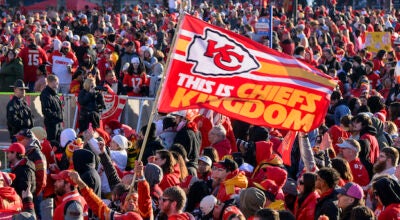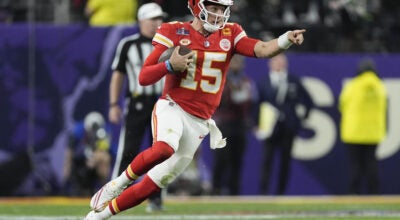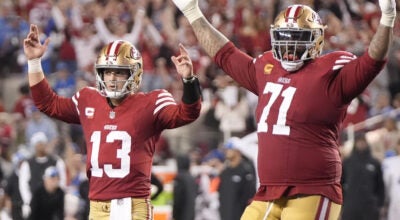Lake Charles’ link to Negro Leagues history
Published 8:30 am Friday, August 2, 2013
In September 1935, Chester Williams sat on top of the baseball world, or at least the Negro Leagues, one that existed in the shadow of segregation.
Williams, a crafty, swift shortstop for the famed Pittsburgh Crawfords, had contributed a triple and two doubles in the deciding Game 7 of the Negro National League championships, a contest that ended with a Craws win over the New York Cubans.
Williams, a utility infielder who particularly excelled at shortstop, had become a key, if unheralded, part of a championship team that — saturated with future Hall of Famers Josh Gibson, Cool Papa Bell, Judy Johnson and Oscar Charleston (and, when he felt like it, Satchel Paige) — many historians consider the best squad in Negro Leagues history, if not all of baseballdom — black or white.
Such glory quite certainly contradicted sharply with the scene in Lake Charles on Christmas night 1952, when Williams was unceremoniously shot to death in the Cotton Club, a Lake Charles night spot the former baseball star owned.
Less than a year later, the federal government approved an application signed by Nellie Williams — whose relationship with Chester Williams is unclear — for a military headstone for the final resting place of the World War II veteran.
Chester Arthur Williams’ remains lay in Hi-Mount Cemetery in Lake Charles, practically all that’s left to burnish the memory of a man who played alongside all-time baseball greats but whose life has been shrouded in mystery since his birth in 1906.
Williams might have been a Lake Charles native — contemporary accounts listed his birthplace as Beaumont, Texas; rural Mississippi; and New Orleans in addition to Lake Charles — but he definitely lived in the southwestern Louisiana city for much of his life, including his post-baseball years.
Most likely, Williams traced his roots ultimately to Mississippi, but apparently sometime during childhood or young adulthood the youthful Williams moved to Louisiana. Exactly where in Mississippi Williams was from couldn’t be pinned down with assurance; U.S. Census records show several possible locales in 1910 and 1920.
Whether he spent any time in New Orleans isn’t confirmed, but articles in the African-American press that covered his death reported that Williams began his hardball career with an unnamed Lake Charles team helmed by Sam Richards.
He reportedly spent 1929 and 1930 playing with the Houston Black Buffaloes before moving on to the big-time Memphis Red Sox and Chicago American Giants; media accounts confirm that Williams spent 1930 playing for Memphis, but none exist proving that he played for the American Giants. In fact, press coverage shows that Williams spent 1931 with the Indianapolis ABCs.
It was in 1932 that Williams’ career really took off — he signed with Gus Greenlee’s Pittsburgh Crawfords, who spent their first few years as a successful semi-pro sandlot team before being purchased by the restaurateur, hotel owner and alleged numbers runner. Greenlee was at the start of a process to build the Craws into a top-notch professional squad, and Williams was one of his first signees.
From the beginning, Williams’ keen talents were on display, leading prominent observers and sports scribes to tab him as an up-and-comer with star potential. For example, in a Dec. 31, 1932, column, Pittsburgh Courier writer W. Rollo Wilson listed Williams as part of a key batch of much-needed youngsters who could infuse life and vigor into the Negro Leagues.
Evidence exists showing that although Williams wasn’t playing for Pittsburgh in 1930, he was already living in the Steel City. The 1930 Census indicates a Chester Williams, born in roughly 1906 in Mississippi, living in the Rankin Borough of Pittsburgh with his wife, Annie, and 2-year-old son Arthur. His occupation is listed, not surprisingly given the location, a laborer in a steel mill. The family appears to have lived in a neighborhood populated by Russian, Czechoslovakian and Yugoslavian immigrants.
By 1934, Greenlee had amassed a corps of future Hall of Famers who surrounded Williams and other key but less heralded players. Williams spent the better part of the next decade with the Crawfords, helping them to the pinnacle of the blackball world and building his reputation.
Here’s the assessment of author James A. Riley in “The Biographical Encyclopedia of the Negro Baseball Leagues”:
“The sparkplug of the infield for the Pittsburgh Crawfords in the 1930s, this quick, flashy shortstop … remained an essential part of the nucleus of the great Crawford teams that sent five players to the Hall of Fame. An outstanding fielder, he could play either shortstop or second base equally well. On the bases he had both speed and quickness and posed a threat to steal. A solid hitter with appreciable power, he hit for averages of .302, .301, .319, 247 and .381 during the Crawfords’ glory years. 1932-1936. A ballplayer’s ballplayer, the scrappy infielder ‘came to play,’ and his team value was recognized by teammates and opponents alike. His style of play was also appreciated by the fans, and he was selected to play in four consecutive East-West All Star games in 1934-1937.”
But the 1930s were also pockmarked with controversy for Williams, who was frequently noted as a Lake Charles resident in contemporary media reports. In the midst of the 1932 season and spilling over into the 1933 campaign, Williams was at the center of a trade and contract war between the Crawfords and their bitter, also-Pittsburgh-based rivals, the Homestead Grays, that ended with the Grays being booted from the reincarnated version of the Negro National League. In fact, Williams appears to have at least started spring training in 1933 with the Grays, not the Crawfords.
Then, in 1934, Greenlee suspended Chester Williams and teammate Curtis Harris indefinitely for, according to one press account, “conduct unbecoming ball players and gentlemen.”
Williams also played a part in the continuous drama over Negro Leagues players skipping out on their contracts in the U.S. to play in Latin America, where they made more money and were treated like royalty, unlike in the States.
In 1937, for example, teams in the Dominican Republic raided Negro League squads, plucking some of the best talent from league teams. At one point, Williams was reportedly offered a lucrative contract to play in Central America, but he apparently turned it down.
In April 1937, Greenlee boasted to the Chicago Defender that Williams would definitely be on the Crawford roster for the season and “will be the nation’s outstanding shortstop this season.” Greenlee’s prediction came true — Williams ended up batting .383 in ’37.
But by that time, the Craws’ roster was thinning, and their glory years passed. Williams starred in Cuba and Mexico for a few years before returning Stateside to play for the Grays; the 1940 Census shows a 34-year-old, Mississippi-born Chester Williams living in the Homestead section of Pittsburgh with his wife, Anna (as opposed to Annie in the 1930 Census), and children Theodore, Henry, Clifford and Barbara.
Williams shuffled around baseball for a couple more years before returning to Lake Charles and enlisting in the Army in October 1943. His enlistment records show his residence as Calcasieu Parish, his marital status as married, with one year of high school and a civil occupation of “athletes, sports instructors, and sports officials.”
Williams served as a private in a quartermaster truck company before being honorably discharged in August 1944 after hurting his arm. He then appears to have retired from baseball and the military and settled into civilian life in Lake Charles. His retirement years included managing and promoting several teams in the Lake Charles area.
That ended on that fateful Dec. 25, 1952, when he was killed in his own Lake Charles night club. Louisiana media — including the American Press, the New Orleans Times-Picayune and NOLA’s African-American paper, the Louisiana Weekly — all apparently ignored Williams death, leaving it to the national black press to report on the incident.
According to those reports, police at the time said Williams was fatally shot about 6:30 p.m. at the Cotton Club. He was struck by five bullets — two in the left arm, two in the neck and one in the left football. Police arrested Tom Scott, who was sent to the hospital with ice-pick wounds that appeared to have been inflicted by Williams in the brawl.
An article in the Jan. 3, 1953, Pittsburgh Courier — which included an incorrect dateline of Lake Charles, Texas — posthumously praised Williams as a top-notch athlete.
“With the Crawfords, he reached his peak and was rated as one of the greatest infielders of all time,” the paper wrote. “… Among oldtimers there are only a few that ranked in the same class with Williams …”
That, unfortunately, is where the Chester Arthur Williams story ends. No follow-up contemporary media reports of his death appear to exist, and according to current representatives of the Lake Charles Police Department, any officers who might have worked Williams’ death have long since retired, and any files about the incident are likely buried in records vaults, if they even exist at all.
LCPD cold-case officers couldn’t be reached for comment, and staffers at the Calcasieu Clerk of Court’s office were similarly unhelpful when asked about records that might exist of how Scott’s case proceeded in court.
That leaves the 1953 application for a military headstone for Williams issued by Nellie Williams as one of the last official documents detailing Chester’s life and death. A death certificate does exist in the Louisiana State Archives, but it couldn’t be obtained in time for this article.
Nellie’s application was granted on Sept. 1, 1953, and now a headstone marks Chester’s resting place in Hi-Mount Cemetery. But even with that, errors and inaccuracies shroud Williams’ legacy: Nellie’s headstone application lists the name of the cemetery as “My Mount Cementery.”
The 1935 Pittsburgh Crawfords. (Special to the American Press)





